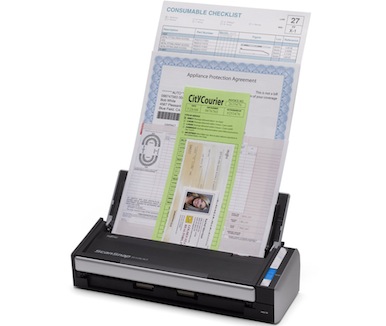Switch To A Paperless Office To Reduce Deforestation And Cut Down An Overhead
3 min read
Office… A mention of the word always brought to mind boxes and stacks of cardboard files packed with papers – official letters, legal documents, audit reports and a lot more. If an employee had to search for a particular detail, it was natural to see him sitting in the midst of heaps of files. However, ask a child brought up in this Internet age to list the words he associates with the term office, “computers” tops the list.
They are not to blame because we are gradually moving towards a paperless office. In modern times, a large amount of communication takes place electronically. Email is a preferred medium of communication. Where earlier documents were photocopied and posted, they are now scanned and mailed over a wireless network in the form of attachments. Not only this, important business information is stored electronically in files and folders housed in computers. The only papers we will probably get to see at an office setting in the near future are newspapers, calendars, money and monetary documents such as checks and promissory notes. The chances of the first are very less as newspapers are already available in their digital forms.
While many other trends ushered in by technology received a divided response, the transition to a paperless society, be it a home or an office, is a welcome one.

It is a Question of Efficiency, Environmentalism and Cost
A paperless office allows for higher efficiency in work processes. Files, documents and bills stored in folders in computer systems can be easily accessed. Thus, less amount of time is spent looking for it among piles of paper and files. The same document can be searched in a matter of seconds. Search options available on computer systems increase the ease of locating documents. Adding efficiency is the ability to alter, modify or duplicate a document without having to rewrite or retype it.
A paperless office is strongly tied to environmental protection and conservation. The reams of papers used at offices for printing purposes only have swallowed dozens of trees over the past few years. The fast depleting forest cover, deforestation in technical terms, has caused several climate and environmental problems. It has resulted in global warming and ocean acidification. It has also caused severe flooding and soil degradation. By reducing the amount of paper we use for daily activities, we can help conserve the environment and reverse these climatic and environmental problems.
Going paperless reduces overhead expenses in the form of printing, mailing and shipping. It also frees up space in the office. A company can save expenses on the purchase and maintenance of equipment such as a copier or fax machine.

Making the Transition to a Paperless Office
The transition appears to be an easy one, but it won’t happen overnight. A paperless office is not an automated system; it requires manual inputs to get it started.
- Well-organized Electronic Filing Systems – An electronic filing system is similar to a traditional paper system except for a difference in medium. Documents should be stored in properly-labeled folders so that they can be retrieved easily when needed.
- Backup Solutions – Computers are electronic devices. There are chances of a system crash or data corruption. Hence, it is necessary to backup all files and folders. This includes removing data to removable hard drives, secondary hard drives attached to the same system or to internet storage spaces.
- Scanning Documents – Sounds like more work doesn’t it? Scanning documents transfers hard copies to electronic filing systems. It is also a great way to maintain records dating back to several years.
- Training – Numerous computer applications have been developed to handle business tasks such as desktop publishing, accounting, billing, mailing and scheduling. Employees will have to be taught how to use new software application. Thus, it involves a learning curve.
Going Paperless
Going Paperless does not necessarily mean eliminating paper completely. It could also mean cutting your use of paper drastically. Instead of sending out paper faxes, you can generate internet faxes. In addition to this, there is an upcoming trend of electronic signatures or E-sign. Electronic signatures can be used to stamp outgoing documents.
Paper is a dying medium. So, train in the aspects of the digital world. After all, don’t you want to fit into a paperless office, comfortably?




